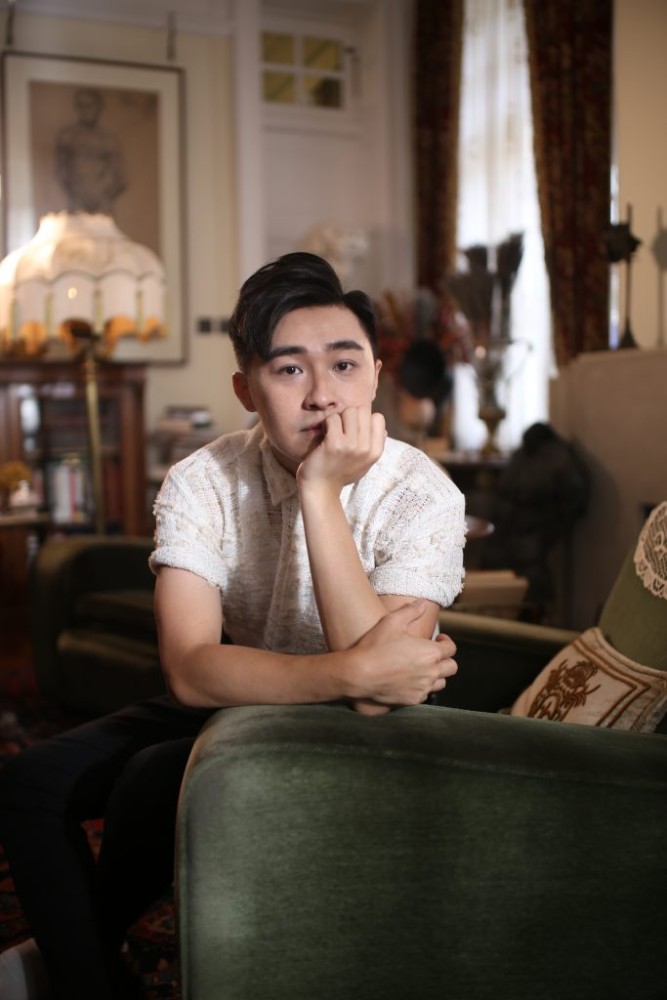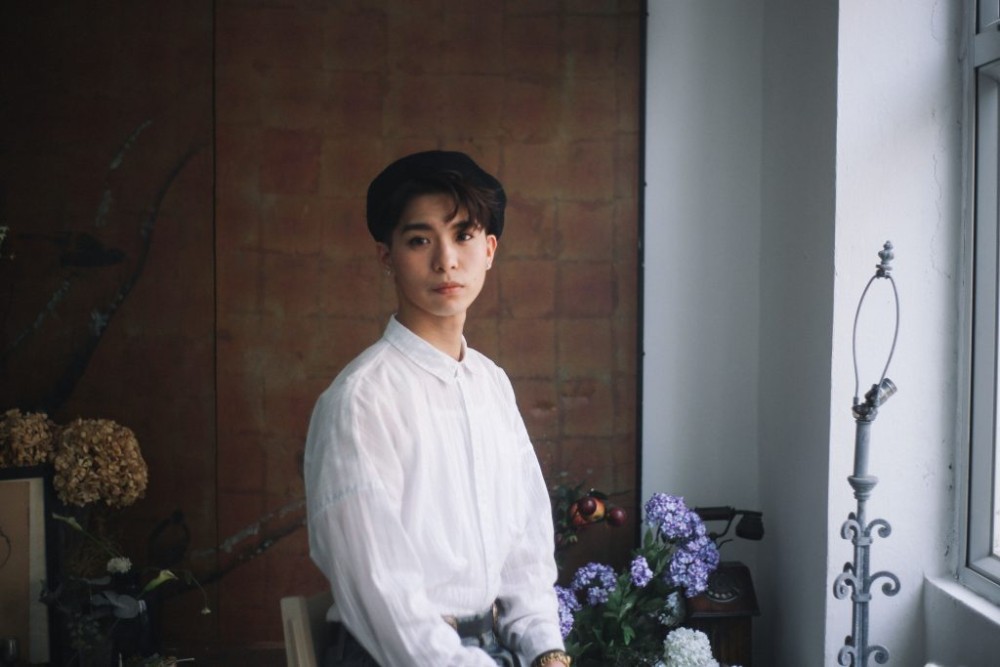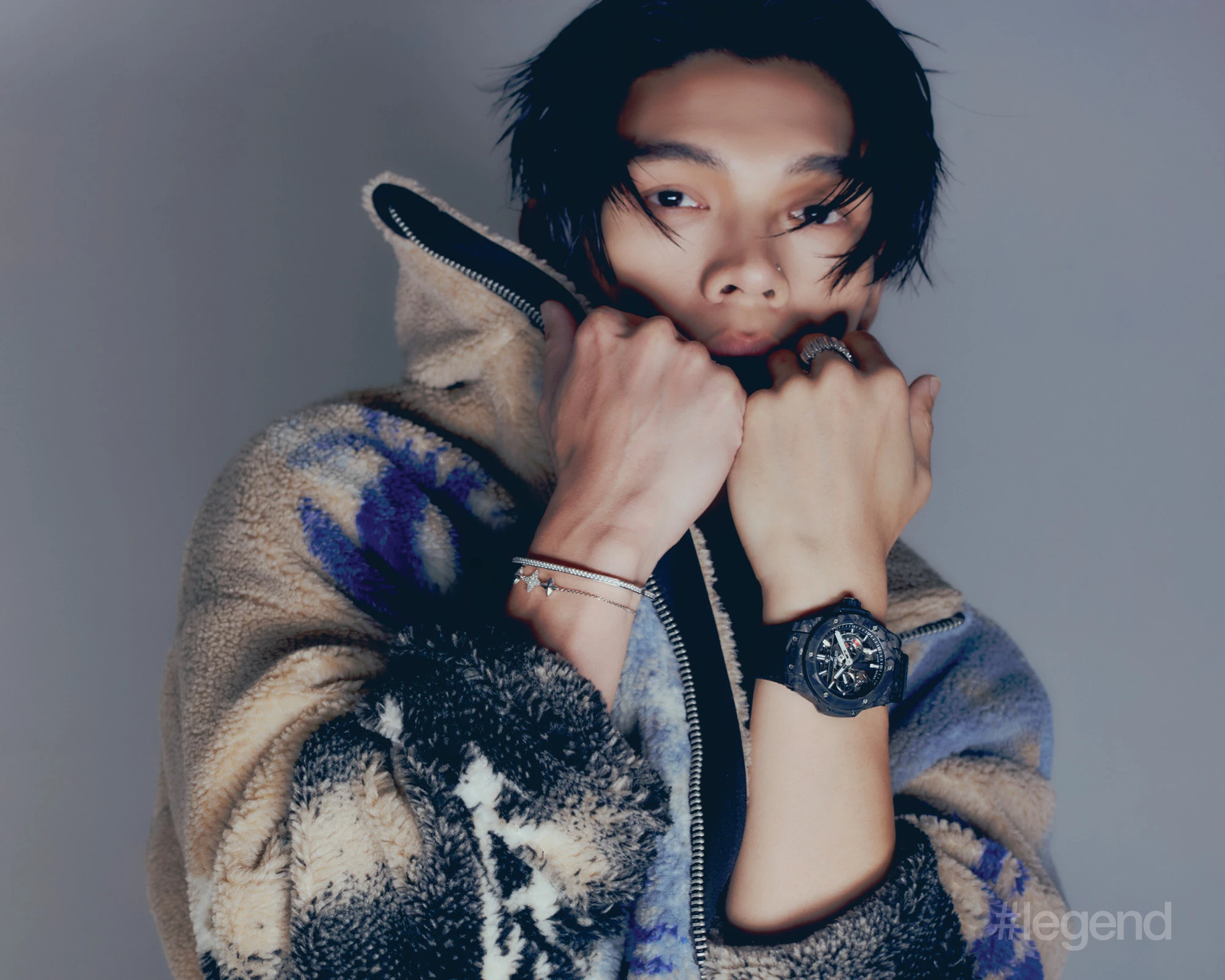Hong Kong label Demo returns to its roots with first couture collection
Oct 27, 2021
Having dressed the likes of Mirror and Hins Cheung, Hong Kong label Demo’s co-founder Mite Chan shares why craftsmanship is integral to the house’s inaugural couture creations

When I reach out to Derek Chan, the design half of Hong Kong-based menswear brand Demo, he’s in Shanghai having just shown the brand’s first couture collection – Métier 21/22. A collection comprising only black and white hues, which recalled the underground ball scene of the ’80s, with draped skirting, hand-embroidered beaded white shirts and bows and sashes rendered in grandiose proportions, it’s a momentous occasion for the eight-year-old label founded by Chan and Mite Chan, both fashion students of The Hong Kong Polytechnic University.
After a lot of hard work to develop a successful commercial business, Métier is the effort of both founders to return to their initial design aspirations – to create beautiful occasion-wear for men and to have them “shine bright” as the label’s Instagram bio puts it. It’s an occasion that also spotlights Demo’s long-time commitment to craftsmanship and traditional garment-making techniques.

Why did you and Derek feel the need to start your own menswear brand back in 2013?
When Derek and I were studying, he was [also] working to save up money for his own brand. We met at university and were dating when I realised that I really liked fashion but there weren’t any clothes I wanted to buy or wanted to wear in the market at the time. Back then, Abercrombie & Fitch was doing really well and we felt like the whole world’s aesthetic standards were all about overt, brawny masculinity, that only these muscle men were considered beautiful.
If you were male with another mindset, another attitude, no clothes were available because everything was just stuff that emphasised masculinity. We thought we could bring something different to this landscape. We wanted clothes that represented us, our style and characters. Women have so many options. We want men to shine bright as well. It took us a while to then realise there was a demand for more gender-neutral clothing that was neither A&F nor streetwear. Tailoring has made a comeback and if you look at Gucci, Alessandro Michele has been designing pieces that both men and women can wear. Look at Harry Styles.
“We wanted clothes that represented us, our style and characters. Women have so many options. We want men
– Mite Chan
to shine bright as well”
You call your collections contemporary classic, and the silhouettes certainly embody this, but one of the hallmarks of your brand is its meticulous attention to craftsmanship. Rarely does a younger brand have an Instagram Stories Highlight drawing attention to how each component of its pieces is created.
When we first started this brand, we weren’t as cautious about these things and didn’t know how to buy fabric nor how to control the quality. I remember very clearly our friend Kieran telling us that our designs were nice but if the fabric could be of better quality, it would be even better.
From this, Derek and I realised that fabric and craftsmanship were something we would focus on and so we developed it slowly with Derek learning a lot of skills as we continued working on the brand. For example, he learned to make qipao from a 90-year old qipao master using the most traditional methods. The tools they use are ones that seamstresses now wouldn’t know how to use, like this item called fen doi (a chalk pouch) that holds finely ground chalk. String is embedded in the chalk pouch and when pulled out can transfer marks onto fabric just by flicking the string, which doesn’t ruin delicate fabric like silk while allowing for precision – but not many people know how to use this method.
Derek’s learnt a lot of skills – how to tailor a suit, for instance. I think design inspiration can’t stray too far from craftsmanship because even if you have an idea in your head, if your technique and craftsmanship don’t match then nothing works. We emphasise contemporary classic because, despite our contemporary design approaches, we also use traditional methods and silhouettes so it’s a marriage of the new and old.

And how does this apply to Métier? What does couture in Hong Kong look like?
Métier is our imagination of what it would be like if men could wear ball gowns. Derek designs for guys to also achieve that “Look at Me” effect. Each piece is entirely made by hand in our studio. We haven’t done that in a long time.
For example, the embellishment on each shirt takes days. I have a colleague who only worked on the embellishment, who would mark the positions of the pearls and beads on the pattern of the shirt and stitch them in one by one.
We also have a specific colleague for tassels and we have this long, draped skirt trouser, which Derek draped by hand. Watching him drape it was like watching a fashion film. He wanted to return to the most traditional techniques of garment-making to develop this collection. It’s not about mass production so we allowed ourselves to use these slower handmade methods and the reception from our VIP clients has so far been excellent.
What has been their response?
It’s interesting because we’ve spent so long figuring out how to create commercial pieces for our customers where we would roll out 60-70 SKU each season but end up making 70 per cent because the rest is too dramatic and too showy.
But Derek and I have noticed this phenomenon lately where, after the pandemic, people have been buying more dramatic pieces, which doesn’t seem logical because you’d think there are fewer parties to go to and people would buy less. Clothes we thought weren’t commercial have been selling well, which is something we didn’t expect. Maybe it’s because Mirror wears our clothes but many of our long-term VIP clients have also told us that they love the Métier collection because it reminds them of the earliest days of our brand and that it really goes back to our roots.
Also see: No Time to Die’s Lashana Lynch brings new light to James Bond franchise

























